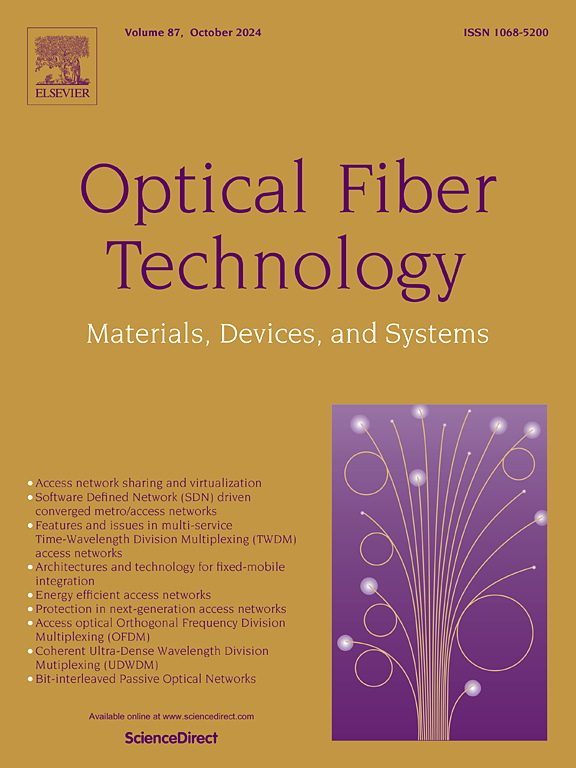Third-order sparse Volterra equalizer based nonlinear suppression method for WDM PDM CO-GFDM systems
IF 2.6
3区 计算机科学
Q2 ENGINEERING, ELECTRICAL & ELECTRONIC
引用次数: 0
Abstract
Compared to orthogonal frequency division multiplexing (OFDM), generalized frequency division multiplexing (GFDM) has advantages such as low peak-to-average power ratio (PAPR) and high spectral efficiency (SE). These features enable GFDM to be applied in long-haul coherent optical (CO) fiber transmission systems and to be combined with techniques such as polarization-division multiplexing (PDM) and wavelength-division multiplexing (WDM) to achieve Terabit-level transmission rate. However, the nonlinear effects introduced by long-haul optical fiber transmission evidently degrade the performance of WDM PDM CO-GFDM system. To the best of our knowledge, no existing researches have focused on nonlinear suppression for WDM PDM CO-GFDM system. Meanwhile, it is known that the sparse Volterra model based compensator can achieve similar bit error rate (BER) performance compared with traditional full Volterra compensator while maintaining lower complexity in nonlinear effect compensation. In this paper, we proposed 3rd-order sparse Volterra equalizer (SVE) for WDM PDM CO-GFDM system. We systematically introduced the principle of WDM PDM CO-GFDM system and deducted its nonlinear channel model based on 3rd-order Volterra series. Then we theoretically deduced the principle of sparse Volterra model, the structure of train sequence and the operation of estimating the coefficients of Volterra kernels using recursive least squares (RLS) algorithm. Simulation results demonstrate that, WDM PDM CO-GFDM system possess significantly lower BER compared with WDM PDM CO-OFDM system while achieve evidently higher net bit rate and net SE. Furthermore, for a 16-QAM modulated WDM PDM CO-GFDM simulation system with high data rate (eg. 1.6 Tbit/s sampling rate, 1.39 Tbit/s net bit rate and 138.74 bit/s/Hz net SE), the 3rd-order Volterra model based method improves the maximum transmission distance by approximately 33% compared to the 1st-order Volterra model for WDM PDM CO-GFDM system. Besides, while achieving similar BER performance, the computational complexity of the SVE is significantly decreased compared to the traditional Volterra compensator.
求助全文
约1分钟内获得全文
求助全文
来源期刊

Optical Fiber Technology
工程技术-电信学
CiteScore
4.80
自引率
11.10%
发文量
327
审稿时长
63 days
期刊介绍:
Innovations in optical fiber technology are revolutionizing world communications. Newly developed fiber amplifiers allow for direct transmission of high-speed signals over transcontinental distances without the need for electronic regeneration. Optical fibers find new applications in data processing. The impact of fiber materials, devices, and systems on communications in the coming decades will create an abundance of primary literature and the need for up-to-date reviews.
Optical Fiber Technology: Materials, Devices, and Systems is a new cutting-edge journal designed to fill a need in this rapidly evolving field for speedy publication of regular length papers. Both theoretical and experimental papers on fiber materials, devices, and system performance evaluation and measurements are eligible, with emphasis on practical applications.
 求助内容:
求助内容: 应助结果提醒方式:
应助结果提醒方式:


